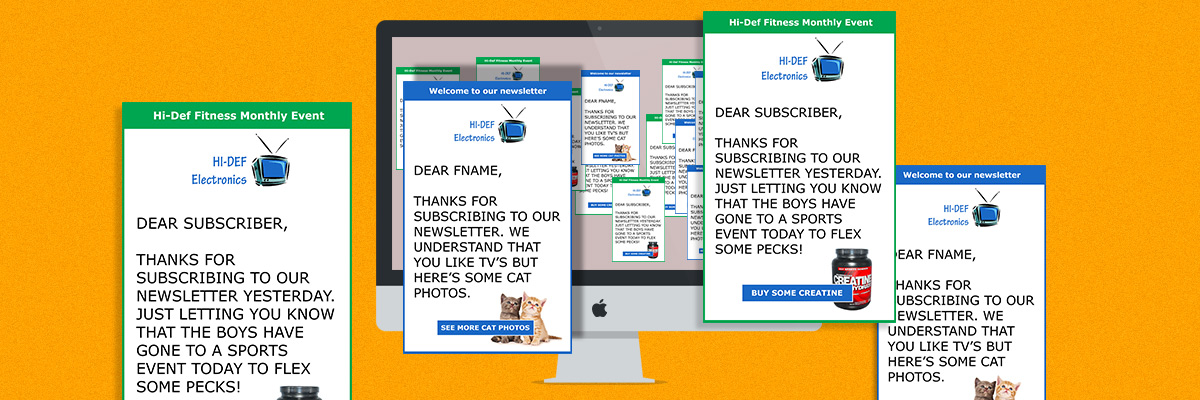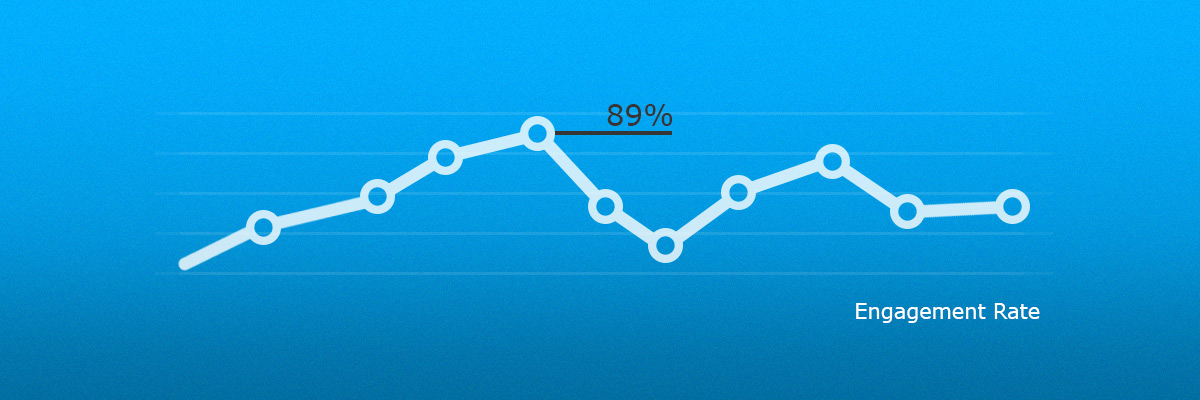Our Blog
When A Brand Becomes Background Noise
Written by Ashley Vessey on September 10, 2015
Let’s get one thing clear, we’ve all experienced this at some point in our lives. It may have happened in our inboxes, on social media or during an advert on telly.
As brands bombard us with each passing day, they fail to understand why engagement rates are reducing, or why marketing just isn’t working the way it used to.
Falling short in marketing can have a worse effect than to even have no marketing in the first place.
Take this example.
So I sign up to a newsletter. I decide, “Hmm, my living room could do with a better TV. I do like the one we’ve got, but my friend’s TV has all this cool stuff and is bigger.” So I sign up for Hi-Def Electronics’ newsletter. What do I get to my inbox? Well, I get a “Welcome to our newsletter”. Not what I was expecting, but okay.

Tomorrow comes, “Meet Dan, our latest recruit.” Meet Dan? Who’s Dan?
I’m pretty sure that employing new members to Hi-Def is very important to the company, but I’ve only just been introduced to your brand. I don’t care too much about who you bring on. For all I’m concerned, the sales team could be a tower of giraffes.
“Hi-Def Fitness Monthly Event.” “Find us at stand D356”; I was signing up for a TV newsletter, I don’t want to go to an event about fitness. That’s why I’m searching online.
How brands can cause friction
With newsletters, it’s not necessarily the quality of the content produced, but the volume at which it happens. You’ve probably seen this before. I’m currently signed up to a list on Groupon, a global company that offer deals on a wide range of things.
At first, I thought it was a good idea to sign up. Since then I’ve been inundated with deals day after day, some of them good, but a lot of them aren’t even related to what interests me. For that reason, I soon lost interest in the brand and started hitting the delete button as soon as they landed in my inbox. A lot of brands make this mistake by not keeping a consistency on the content they send out. The longer you leave this, the more damage you risk to your business.

We get mentally inundated by brands
These days, we don’t even need to leave the bedroom to understand how many brands are involved in our lives. As human beings, we have a tolerance to quantify how much is too much, before it’s handled subconsciously. We might not be aware of it, but brands like Coca-Cola are so well embedded into our lives, we simply take no notice of them.
With certain brands however, this might not always work the way it should.
As we all know, the brain is a very complex organ. If for some reason it begins to associate a brand with something negative, such as a previous event or an emotion, that’s pretty much game over for them.
When you see the same brand, same person, same logo over and over again, all these associations with the company turns to background noise. You may not notice these changes at all, but your brain soon filters them because it can’t handle the volume at which it’s receiving. So the next time you see that associated brand, your brain switches on ‘filter mode’ and deals with the issue at hand, which may happen on a subconscious level.
Team tip #1: Be unique, be consistent and don’t become repetitive. Consistency in terms of design language is good. But consistency in general may lead to repetitiveness.
Quality is too low or not regular enough for my attention
When quality of the content is lacking or too infrequent to matter, you’ve got yourself a growing problem. This goes back to what I was talking about with Groupon, where one out of a dozen emails were interesting. But the same thing happens if it becomes too infrequently, where having fewer engaging messages will guarantee that people will not want to pay attention and engage with your brand.
You may not know this with Facebook, but if a campaign doesn’t perform up to par with others you’ve produced, the next time you send out a campaign, they’ll set the bar much higher than normal. That way you’ll have to work harder to get the same reach of engagement.
Team tip #2: Make sure to keep an eye on how each campaign is performing; if you notice a spike in engagement, try to figure out how and why this happened.
Team tip #3: Consider producing content that helps and entertains the customer. This might be an obvious one, but we’ve all seen the countless posts about “our latest product range” and “introducing the latest member to the team.” This might be relevant to some, but if the customer signed up just for insight, everything else is just background noise. In short, make sure to only focus on creating content that is insightful, rather than the frequency they get sent out.

Users have limited control over what they receive
Most websites still don’t offer the option to let the user choose the frequency they get emailed, which in my opinion is quite frustrating. If you send out regular emails, why not give control back to the users and let them choose how often they want to receive those emails.
Team tip #4: Even better, give them the choice to choose what type of emails to opt into, be it marketing tips, educational, etc.
In short:
- Keep an eye on how well (or not) your content engages with the audience – if you fall short in an area figure out why that’s happening.
- Bad marketing is just as bad as having no marketing at all.
- Don’t sell your services all the time; make sure to create engaging content that is also educational.
- All companies should use brand guidelines right? The same should apply for your newsletters. Create a brand focused template and stick to it!
- Sometimes campaigns don’t always need to be about the services that your company offer. How about creating a softer campaign that subconsciously draws the reader in while promoting your brand.
Don’t Miss Out!
Sign up to our mailing list and keep up-to-date with the latest news from MeeCreative